The Battle Of Midway 75th Anniversary: Turning Point In The Pacific [Part One]
May 22, 2017 by oriskany
Military history is littered with turning points. I use the term “littered” intentionally since most battles we think of as “turning points” are nothing of the sort. Wars are huge, complex “engines of causality” that turn on long, curving trends - involving dozens of battles, months or years of time, and millions of people.
The true “turning point” is a rare beast. The Battle of Midway is one of these.
Welcome to our Commemorative 75th Anniversary article series on the Battle of Midway, fought between the United States and Imperial Japan on the high seas of the Pacific in June 1942. The series will encompass five articles, presented by myself (@oriskany) and Beasts of War member @ecclesiastes (Hendrik Jan Seijmonsbergen).
A New Kind of Battle
The Battle of Midway, at its most fundamental level, was a naval battle fought between Japanese and American aircraft carriers. This was a new type of naval battle, largely putting to rest the plodding gunnery duels fought between battleships that had dominated naval warfare since the Spanish Armada almost 400 years before.
Now, of course, people will mention the Battle of the Coral Sea, also fought between Japanese and American carriers, fought the previous month (May 1942). And others will bring up strikes like Taranto, Pearl Harbor, and the sinking of HMS Repulse and Prince of Wales, all of which featured aircraft carriers and took place before Midway.
While certainly revolutionary, Coral Sea was much smaller and at the time almost considered a fluke. Midway would “confirm” what the Coral Sea had “proposed.” And actions like Taranto and Pearl Harbor were strikes, Midway would show that aircraft carriers would form the cornerstone of set-piece naval engagements from here on out.
A Wargamer’s View
Wargaming the Battle of Midway poses a number of challenges for the intrepid hobbyist. Fortunately, BoW community member @ecclesiastes has put together “Naval War” - a great system which can be used to recreate the most pivotal parts of this pivotal battle.
Naval War is a freely available, print-and-play naval miniatures game, designed expressly for World War II naval engagements, available here: https://www.naval-war.com/. For anyone with even a passing interest in WWII naval combat, I cannot urge you strongly enough to check out this innovative and evolving system.
I’ve seen a lot of WWII naval wargames, but this one really seems to nail the “sweet spot” between playability and “nutz-n-boltz” historical realism. This, combined with Hendrik Jan’s absolutely epic miniature warships as seen on Beasts of War, convinced me to reach out to him for collaboration on this Midway project.
Even with the best miniatures and rules in the world, however, the Battle of Midway presents some tall obstacles. First up is the scale. Because these battles were fought almost exclusively by aircraft launched from carriers, there were always hundreds of miles between opposing task forces that never actually saw each other.
For this reason, it’s probably a good idea to also have a larger “area” map, where the positions, headings, and speeds of both sides’ naval task forces are tracked. This way the battle could encompass the vast emptiness of the Pacific, zeroing in on the table when the aircraft, submarines, or even surface warships come to grips with the foe.
Another factor that should be taken into account for a Midway wargame is scouting. In these Pacific carrier battles, the first task for both sides was simply to find the enemy. In a day before recon satellites or even reliable long-range radar, fixing a moving enemy fleet’s location amidst a quarter million square miles of ocean was never easy.
Yet finding and tracking an enemy task force was as vital as it was difficult. Whether through search plane, surface picket ship, or submarine, finding the enemy meant your side could launch that all-important first strike. Meanwhile, you had to naturally do whatever you could to keep the enemy from finding you.
Pacific War Background
Before “cutting into the meat” of Midway, perhaps we should review just the briefest summaries of the Pacific War and discuss the background of how Midway fits into the larger context.
Since at least 1937, Japan had been engaged in a war of conquest in China. Japan, however, is not an island blessed with an abundance of natural resources, and soon Japan’s ability to sustain the war came into doubt. The situation only worsened when the United States placed trade embargoes on Japan in protest of their invasion of China.
Yet many of these resources could be taken from places like the French and Dutch colonies in south-east Asia and the East Indies, especially once France and Holland fell to German occupation in 1940. Any move against these territories, however, would be countered by the Americans in the Philippines and British in Singapore.
For the Japanese, the solution was simple. Hit the Americans and British first. Thus, in December 1941 we have the infamous surprise attack on Pearl Harbor, the invasion of the Philippines, and the invasion of Malaya, which culminated in the fall of Singapore (by some measures the worst military disaster in the history of the UK).
For at least six months, the Japanese seemed unstoppable. They invaded the Dutch East Indies and crushed a combined US/UK/Dutch naval task force at the Battle of the Java Sea. They invaded Burma and penetrated as far as modern-day Bangladesh. The overran tens of thousands of individual islands, defeating the Americans everywhere.
Soon, Japanese troops were in New Guinea and Australia was being bombed. American and Australian resistance on New Guinea was about to be outflanked as the Japanese swung an invasion fleet around the island’s east tip, hoping to land at Port Moresby on New Guinea’s south shore.
Such an invasion would have spelt disaster for the Allies, potentially opening Australia to a full Japanese invasion. But the Japanese invasion fleet was turned back in May of 1942 at the Battle of the Coral Sea, where opposing battlegroups built around Japanese and American aircraft carriers engaged in the first true “carrier” naval battle.
Technically, the Japanese won this battle, sinking the large American fleet carrier Lexington in exchange for only a small light carrier, Shoho. Nevertheless, the Japanese troop transports were forced to turn back, and for the first time in World War II, the “Japanese Blitzkrieg” had actually been stopped.
Thus, the Japanese began planning to destroy the American aircraft carrier force once and for all. They formed a complex plan based mostly on bait and deception, designed to force all remaining American aircraft carriers into a lethal trap. Japanese dominance of the Pacific could then be assured for years.
Midway: The Plan
The main Japanese target was the Midway Atoll, a tiny cluster of islands smack dab in the middle of the Pacific Ocean (as its name suggests). Technically part of the Hawaiian Islands, possession of Midway would put Hawaii (and Pearl Harbor) within reach of Japanese invasion. This was a target the Americans HAD to defend.
To tilt the odds in their favour, the Japanese would also invade two tiny islands on the end of the Aleutians, far to the north off the tip of Alaska. Japanese footholds on North America was another nightmare it was thought the Americans could not allow, and would hopefully divide the American response to the real threat at Midway.
There were three basic problems with the Japanese plan, however. First, it was very complex (we’ve sketched it only the very broadest of strokes here), and complex plans are prone to failure.
Second, the Japanese wouldn’t be striking with their full force. Of their original six carriers that had hit Midway, two had fought at the Coral Sea. One was badly damaged and one had lost almost all of its air group, and since a carrier without aircraft is little more than a gigantic target, the Japanese would have just four carriers at Midway, not six.
Three, the Americans knew everything because they’d broken almost all Japanese naval codes. Just like the British with the German Enigma codes, the Americans were reading “enemy mail” almost as fast as the Japanese were. So the Americans weren’t falling for any traps at Midway, and in fact were hoping to set up an ambush of their own.
Of course, we’re just getting started. In the next part, we’ll look at the opening moves made by both sides at Midway, and look at some of the opening actions through the eyes of Hendrik Jan’s “Naval War” wargame system.
We hope you’ve enjoyed this opening look at wargaming the Battle of Midway. In the meantime, please drop a comment below with your own thoughts on Midway, the Pacific side of World War II, or naval wargaming in general.
After all, what better time for this conversation than now, the 75th Anniversary of what was probably the most decisive naval battle in the last 200 years?
If you would like to write an article for Beasts of War then please contact us at [email protected] for more information!
"This was a new type of naval battle, largely putting to rest the plodding gunnery duels fought between battleships that had dominated naval warfare since the Spanish Armada almost 400 years before..."
Supported by (Turn Off)
Supported by (Turn Off)
"In the next part, we’ll look at the opening moves made by both sides at Midway, and look at some of the opening actions through the eyes of Hendrik Jan’s “Naval War” wargame system..."
Supported by (Turn Off)









































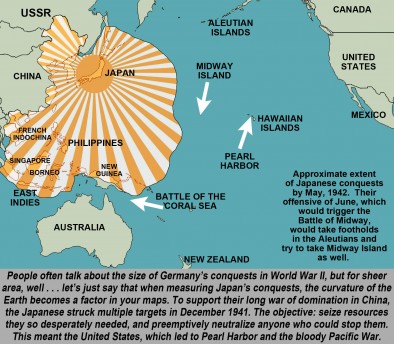
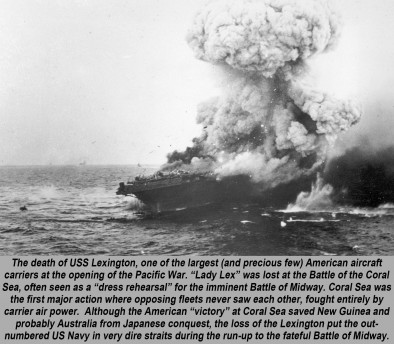

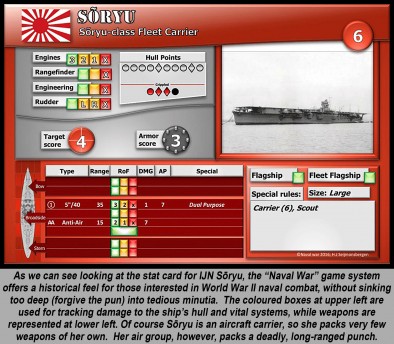
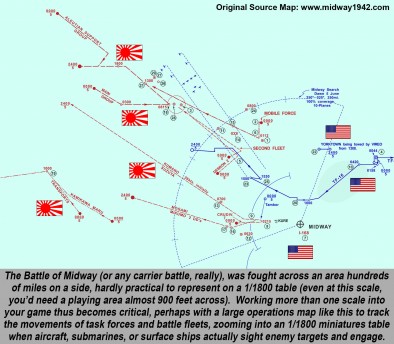
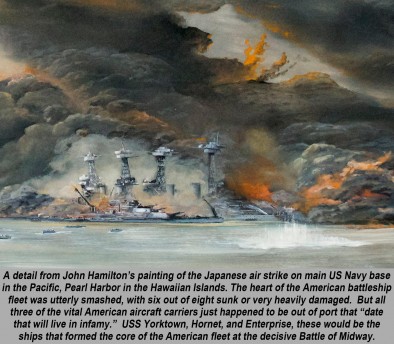
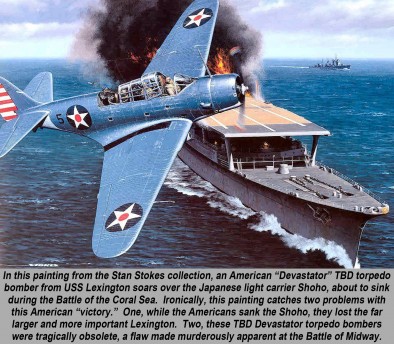
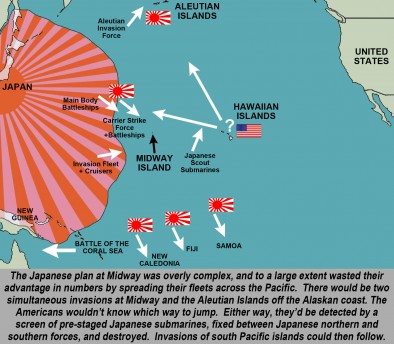
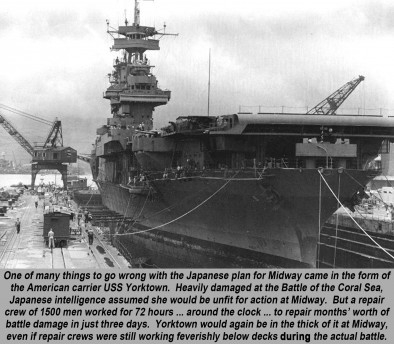
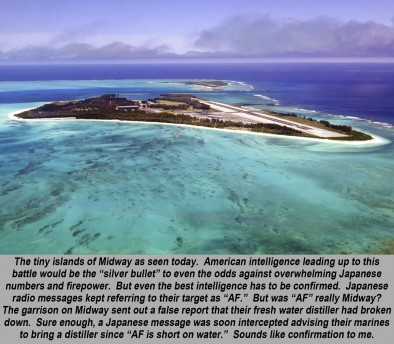


































Excellent article guys really makes me want to go grab some ships. I’m always blown away by the US ability to both build lots of things and repair lots of things quickly. Although I’m more impressed with their ability to totally modernise their factories and make other countries pay for it. Genius. So were U-Boats more of a scouting unit since there weren’t a lot of transport ships moving resources around? I mean once you have the codes Subs are pretty screwed but I imagine the temptation to torpedo an aircraft carrier would be pretty huge for the Japanese especially… Read more »
In line with the Japanese idea’s of a ‘Decisive Battle’ they also put their submarine forces completely in service of this concept. So eventhough the US and Australia had very long and busy supply lines, the Japanese chose to commit their submarines to hunting down the ‘big fish’ instead of the honorless job of commerce raiding. It did net them some impressive results, torpedoing and sinking the carriers USS Yorktown and Wasp, cruisers USS Indianapolis USS Juneau and damaging USS Saratoga (multiple times), USS North Carolina and loads of other warships. But considering the size of their submarine fleet (much… Read more »
Thanks, @elessar2590 – The US and Japanese navies indeed had markedly different ideas about how to use submarines. As @ecclesiastes has noted, the Japanese seemed to view them as “fleet combat vessels,” sinking enemy warships when and where they could. The US took a more German “U-Boat” approach, using them to strangle enemy merchant and logistics shipping. But whereas the Germans failed to accomplish this with the UK, the Americans were much more successful with Japan. “Last Hundred Days of WW2” has reports of American submarine skippers engaging wooden junks with torpedoes and guns because the Japanese have nothing else… Read more »
Thanks guys I’ll have to do some more reading.
The modernisation thing was more of a WW1 comment than a WW2 comment.
Thanks very much for the comments! 😀 And not to spoil anything, but a Japanese submarine does in fact play a pretty major role at the end of the battle.
Thanks for the article, looking forward to the rest of the series. Thanks also for the naval game mechanics, only ever played Axis and Allies and Dystopia, so looking forward to another naval game.
Feel free to give it a try, the ruleset is free, so you can just put down your Axis & Allies War at Sea miniatures (Soryu as shown in the article picture is a repainted A&A War at Sea miniature) and get going!
The thing that impressed me about Naval War the most was its balance of complexity. I touched on this in the article and tried again in the interview. I don’t know what i t is about nval wargames, but almost every WW2 naval wargame I’ve tried is either too simple (Avalon Hill War at Sea, Axis and Allies War at Sea, Avalon Hill’s Midway)or waaay too complex (Avalon Hill’s Flattop, Larry Bond’s Command at Sea). Naval War seems a great landing point right in the middle, the “Goldilocks Zone” of naval detail and complexity and depth vs. accessibility and clean… Read more »
Great start. Looking forward to the rest of the series guys 😀 .
Thanks very much. @kantor72 . 😀
Id really like to play ,I’m going to have to ask my play group about it.
Clearly the start of yet another excellent article. Thank you for the heads up on Naval-War, a great web site and brilliant downloads. Looking forward to part 2.
Awesome, @gremlin , glad you liked it! Things start heating up in Part 2, and positively explode in Part 3. 😀 Some of @ecclesiastes ‘ photos at the end of Part 2 are really awesome.
Excellent read.
Thanks very much, @andre77 – Not exactly the sand-blown deserts of El Alamein, is it? 😀 Gotta keep changing things up to keep it interesting.
It takes something like this to emphasise the sheer scale of the engagement. Reading about naval battles is one thing, but it really does need to be broken down like this ( for me ) to properly take in the mile upon mile of ocean that these ships could ” lose ” themselves in.
Thanks very much, @kantor72 . 😀 Indeed the vastness of even this immediate “corner” of the Pacific is a little tough to grasp for those more accustomed to land battles or traditional wargaming. Speaking for myself, I found it surprisingly difficult to find source maps that actually had a SCALE in miles, kilometers, or nautical miles . . . only because the latitude and longitude measurements do not cross at perfect right angles or form a grid of perfect squares. The distance between two longitude lines at the north end of the map is significantly different than at the southern… Read more »
Can you imagine what it’s going to be like once we get to space ?
The ocean is big, but it’s nothing when compared to finding anything in space.
I’ve done some pretty serious wargame design in space, basically an “excuse” to fight naval battles that never happened. 😀 We were talking about it on another thread.
Meanwhile, a series of books that really captures the sheer scale of space and what that would mean for naval operations is “Lost Fleet.” Not too sure about these series overall, but how they handle speeds, how the limitations of the speed of light actually effect weapons engagement ranges, communications, sensors, and navigation, and those kinds of things is pretty well handled.
I love reading / talking about the ‘ what if ‘ scenarios from an engagement in any era, this is going to be a great overall read 😀 .
Awesome! Well, we’re on every Monday for the next four weeks. Hope you keep reading, enjoying, and commenting. 😀
Hey Oriskany, Warren, and Justin. Check out this video about my Uncle Francis Rouse. He tells his strory. He was in the thick of it during the Battle of Midway. A true war hero.. I’m proud to be his family member.
https://youtu.be/hTl0lxteyBU
Awesome stuff, @thehumungus . The Yorktown is indeed one of those ships that needs to b e remembered in the history of the US Navy forever.
Awesome video. Thanks for the link.
😀 The viewpoint of veterans is always a priceless part of the historical perspective.
Indeed.
I’ve always lamented that we haven’t had more WW1 and WW2 veterans talking about their experiences. And the fact that so much material was scrapped right after WW2.
I fully understand that for many veterans it might by painful memories they’d rather forget. But soon we won’t have any living memories from those conflicts left, and then what? Do we just let it pass into myth and legend?
It’s vitally important that as much material as possible is collected and preserved, least we forget the horrors of those wars and set out to repeat them.
Absolutely. I carefully wrote “The viewpoint of veterans is always a priceless part of the historical perspective” because, to be honest, people who were there and experienced much intense events almost can’t be objective. They’re also usually too close to the event to get the wider picture. Memories fade, emotionalism creeps in, old grudges die hard, etc. BUT, they are still the most precious historical perspective because of their rarity and limited time. No one is “making” WW2 veterans anymore 🙂 but we’ll always have plenty of armchair historians tapping away at keyboards and endlessly repeating each other (like this… Read more »
It will always be biased, yes. But on the other hand, it’s an account of how the war was experienced by the guy down in the trenches.
I mean…
Reading historical books we get an overview of what happened and why. But how did it feel? What was it actually like to walk ashore on D-day or sitting in a Panzer IV at Kursk?
Lately I’ve been reading a lot of memoirs. Makes the war feel more real, if that makes sense?
Yeah, you totally need both kinds of viewpoints. The difference is, we’ll ALWAYS have access to the one. For the other, we need to get all we can, while we can. 😀
I once heard a story (not sure if it was true) about how the Japanese played a wargame to simulate the battle.
They eventually managed to win, but only because they ‘cheated’
IIRC their admiral deployed one more carrier than they had.
Yes, @limburger – the Japanese Navy Operations staff did “test” the plan with wargames repeatedly. I don’t know if the added any additional carriers to their “wargame fleet.” It’s definitely possible. The Japanese actually had SIX fleet carriers at the time, (Akagi, Kaga, Soryu, Hiryu, Shokaku, and Zuikaku), but only four would be deployed at Midway, The remaining two (Shokaku and Zuikaku) had been at Coral Sea, Shokaku took heavy damage and Zuikaku took heavy damage to her air group. It’s possible the Japanese planners hoped at least one of these carriers might be repaired sufficiently in time for participation… Read more »
As far as I recall, during the wargames the “american side” deployed bombers from Midway which ended up doing a fair bit of damage to the Japanese fleet. The umpires overruled that and the invasion progressed anyway.
Still going by my fuzzy memory, it actually turned out to be accurate as the Americans did indeed deploy Midways bomber fleet (which also had the advantage of getting them off the island before the Japanese attacked) but they failed to damage the Japanese fleet.
@warworksdk – you are correct on both counts, sir. The Japanese planning wargames before the battle once produced a result where American land-based bombers sink two Japanese carriers. The result was tossed and ignored by the staff officer in charge of running the wargame – who basically said it could never happen. Then yes, American B-17 heavy bombers, B-26 medium bombers, and SBD dive bombers attacked from the Midway. None of them scored a single hit and except for the B-17s, took incredibly heavy losses. So maybe that staff officer was actually right. American land-based bombers were actually kind of… Read more »
We’ll get to this… We’ll get to that…
Come on, man! Let’s get to the good stuff… 😀
Agreed, Part 02 is now up! 😀 This is a five part article series, there’s a lot to cover. And “all battles are won or lost in the preparation” after all. 😀
But yes, the high-level bombing didn’t do much. In fact, I can’t think of a single instance where it did.
Agreed 100% @warworksdk . During the Ste. Nazaire interview @johnlyons was mentioning where if a “stragetic” bomber landed a bomb within 3/4 of a mile of the aiming point, it was considered a hit. How try to hit an 800-foot target (a littler over 1/7 of a mile) while it’s moving at 30+ miles and hour and maneuvering violently to avoid being hit. Hardly surprising those B-17s didn’t hit anything.
Another great article and looking forward to the rest of the series. I’ve generally steered clear of naval wargaming mainly due to the complex rules required to try to realistically reflect what happens. While I’m not against complex games, there are only so many rule sets that you can memorise and play and I think I reached that limit some time ago. Maybe it’s an age thing. But, I’ve downloaded the Naval War PDF and I’m looking forward to taking a look. I’m also tinkering with a fantasy naval game so it might prove interesting input to that. I’m also… Read more »
I totally know where you’re coming from, @redvers , regarding the over complexity of some naval wargames. While no one can fault the realism, depth, or technical nuance of games like Command at Sea and Harpoon (both designed by Larry Bond, former naval analyst who helped Tom Clancy write Hunt for Red October), and yes, I have played both, non-computerized versions. I think I was in therapy for a week afterwards. 😀 I agree 100% about looking at the higher levels of command in gaming. This is why we ran Midway at two different levels. But even my “big map”… Read more »
I’ve played a fair bit of Hearts of Iron 3 on the PC which lets you control entire nations. Planning takes place on a global scale and thinking ahead to decide your strategy takes a lot of careful thought. You get the opportunity to control your fleets across vast swathes of ocean wile supporting your land units and ensuring their supply lines. I’m currently playing Germany and struggling across the vast Eastern front. Winter is coming and a break through is tough. But the level of planning and game time scales present a whole different challenge to table top gaming.… Read more »
I had always heard of Midway, but I honestly never knew why, among all the battles in the Pacific, this one was a bigger deal than the rest. This article summed it up nicely…Thanks! Of course, reading how complex it will be to “play” it properly, I’m glad I get to read about it and don’t have to do any of the difficult planning. Looking forward to the next installment.
Thanks @gladesrunner . Ehh . . . you can play Midway without getting too complex. Avalon Hill’s Midway boardgame is . . . adequate. Although some of its hidden movement and search plane mechanics seem distressingly like Milton Bradley’s “Battleship.”
“B-4 . . .”
“Miss! Ha ha! Okay, G-3!”
“Arghh! You sank my Battleship!”
It’s so good to see how much history facts you manage to put together, for people like me the simple folk.
Who know most of history through the eyes of TV programs, true (the world of war series) is actual history but films and tv series programs also excite.
But looking and reading facts helps a lot. When you know the person writing it (well i know your face lol).
Well don cant wait for more
World at War series is pretty awesome, especially for the time it came out. No axes to grind, no agendas, not TOO much bias (of course nothing can ever be complete spin-free) no conspiracy-based revisionism. Another great one is the “Battlefield.” series. I think Part 3 of Season 1 is Midway. some people think it’s “boring” because they are 2 hours each and well into the second hour before the battle even starts. But that’s where the show excels, showing that the real decisive parts of a battle are often in the planning and preparation. Thanks very much, @nosbigdamus !… Read more »
I really like the Battlefield series because each episode is so long. They can dedicate the first part to examining the reason why the battle was fought and who the fighters were. Then spend the second half actually looking at the battle itself, what happened and the long term consequences.
As I recall, they did two episodes on naval warfare in the Pacific and one in the Atlantic. Two very different kind of engagements.
Yep, @warworksdk – Seasons One definitely had one on Midway and I think one of the Battle of the Atlantic overall (U-boats vs. convoys, 1939-1943/44). Later seasons would also have one on the Solomons, I think (so that’s 4-5 naval battles right there), one on Leyte Gulf (largest naval battle in history). But I totally agree, the Battlefield series is beyond epic. I usually chuckle politely (or not so politely) at TV documentaries for their sensationalism, poor fact checking, over-generalization, and just straight-out errors and omissions. Battlefield (and the later series they did, Battlefield: Vietnam) are the exception that proves… Read more »
I’ve got season 1 and 2 on DVD. I know they rebooted the series a bit later, but never really got into those.
I’ve got the Vietnam series as well, but I must admit I wasn’t quite as impressed with that as I was with the previous WW2 episodes.
The overall quality seemed a bit lower and the formula didn’t seem entirely appropriate to a conflict that should have been covered chronologically instead.
Still a good series though.
@warworksdk – Maybe we’re talking about different series. Battlefield Vietnam was covered chonologically, starting in Dien Bien Phu in Part 1 and ending with the last NVA invasion in 1975 in Part 12. 😀
There were a few parts that “stepped out of the timeline” and covered one aspect all together, like Air Operations / Rolling Thunder, etc.
I would agree, however, the original was best. But even the original WW2 Battlefield series starts to degrade a little as they march into successive seasons and they have to start covering smaller and more obscure campaigns (Scandinavia, Manchuria, etc).
That’s the series I’m thinking of.
Those out-of-chronology episodes really messed up the timeline. At least in my mind.
Or perhaps It’s just because I’m far more into WW2 than Vietnam. I’m finding it far easier to place the WW2 battles into the right time and place than I do with the Vietnam battles.
I think for me the Battlefield Vietnam series might stand a little higher in my mind (perhaps more than it “deserves”) is the general lack of other good Vietnam documentaries to which it can be compared. At least here in the US, Vietnam documentaries are usually a mixture of apologism, “told ya so,” and a complete lack of perspective from the NVA / NLF side. These are traps that BF Vietnam largely avoids.
WW2 has a lot more good or semi-good documentaries produced about it, I feel.
Good point.
It’s hard to find a documentary that treats Vietnam fairly from both sides of the conflict.
A Vietnam article series is always on my bucket list. I just have to build the armies for it. I have the start of some armies . . . just not enough for a full article series.
Maybe a 50th Anniversary of the Tet Offensive in January-February 2018. 😀
That’s not a bad idea.
I think…???
I’ve heard some – mostly US-based gamers – say that it’s too soon and too close to home. Maybe, for some, it is.
Interesting point. God knows I took some flak for the article series on Ukraine 2014-2015 War. Not from veterans, of course, nor anyone who lived in the Ukraine or knew anyone in the Ukraine. 🙁 But honestly, I weathered it and went forward. As a veteran myself, I’m hardly going to be stopped by that kind of thing. Not to say I would ever do a series on, say . . . Syria. Definitely a no-fly zone for me. I’ve also thought about series on the Gulf Wars 1 and 2 and Enduring Freedom in Afghanistan (served during Gulf 1… Read more »
Oh crap. That wasn’t supposed to be all bold like that.
a nice start to a navel saga I remember the AF reference from the film.
“AF is short on water!”
😀
One of the many things that film gets right. 😀 Of course, still just a movie. But much more forgivable than most. Hey, at least it tries to be fair.
Thanks for the comment! 😀
Look forward to the next one where we get to the real action
Impatient, are we? 😀 Just kidding, @rasmus . Thanks for the comment! Part 2 does have some serious action in it, but Part 3 is where thing really cook off.
Except for constant comments about George Gay Fightin Texas Aggie, this was straight out of WWII at the 300 level. Good job buddy.
Thanks, @ghent99 – I presume you’re talking about Ensign Gay, TBD Devastator Pilot from USS Hornet. You know, I never knew where he went to school (Texas A&M evidently). Awesome! Thanks again, and I hope you like the rest of the series. Check in next week to see how Torpedo Squadron Eight does in its attack against the “Kidō Butai” carrier group – although it sounds like you might already know. 🙁
Yeah our prof that semester and his only at Purdue after calling the French surrender monkeys in front of the dept head. Seriously did a whole lecture on him, it was awesome.
Just looked him up, he ended his career as a Lt. Commander. Flew airliners for 30 years, wrote a book, and was a consultant for the 1976 movie Midway. Awesome.
Great article. I cannot wait for the rest of the story since I am a big fan of WW II naval battles. I have read extensively about the Coral sea and Midway battle and to make a realistic naval battle game about them is fantastic.
Thanks, @silverfox . Coral Sea is indeed an interesting prequel to Midway, and really sets the tone for how Midway would unfold (first “carrier battle” where opposing ships never saw each other, etc.). Thing is, as BoW Historical Editor I’d already “missed” the 75th Anniversary of Coral Sea, and because historical naval battles are a little out of the BoW mainstream, it usually makes sense for us to at least start with what’s really famous and most members have heard of (i.e., Midway). No reason we can’t go back and do Coral Sea, though. Maybe in the forum thread that… Read more »
I, for one, would love to see more historical wargaming on BoW.
You and me both, @warworksdk , and @warzan too. 😀 He brought me on as Historical Editor so we could try to make this happen.
+100 for this comment. 😀
Let me know if you need help. I’d love to see historical warfare get more coverage.
Thanks, @warworksdk ! My “Achilles Heel” on this kind of coverage is miniatures and photos. This is what made @ecclesiastes ‘ help on this Midway project so vital. I can write about Napoleonic battles, for example, for weeks at a time, but I have no Napoleonic miniatures so I can’t take good table photos. And no, I don’t troll through Google Images and just grab gaming photos from other sources. That’s borderline illegal, and the last thing I want is to get anyone in trouble. Even paintings you’ll see in this series I’m always careful to attribute to the artist… Read more »
No problem. 🙂 I’ve been looking at buying some 1/6000 scale ships from Magister Militum. Why 1/6000? Because the a 4′ x 6′ board is approaching a somewhat reasonable scale for battleship engagements. I really want to play some naval action. Just don’t have anyone to share that passion with in the local club… 🙁 Been looking at getting into Battlegroup as well. Got a lot of Battlefront figures stashed away unpainted. Just lost my mojo og Flames of War. Too unrealistic and too much stuff on the table at once. Got a handful of Napoleonic players in the club.… Read more »
Wow, 1/6000. Makes sense, though. At that scale a 6′ table = 36000 feet, or 12000 yards, or 6 nautical miles. Man, at that point it’s almost time for hexes and counters. 😀
Yeah, it’s really small.
I kinda like small though. Easy to paint when you don’t have that many details to worry about.
But for me, having a sense of the right scale is quite important to my enjoyment of tabletop gaming. This isn’t World of Warships where battleships are trading broadsides at 100 meters.
Well…
To be honest, it’s still a bit cramped for battleship-on-battleship action, but any smaller and you’d need a magnifier to see destroyers so… :-p
@warworksdk – I think those tables might work pretty well, at least for WW2 gun battles in the Pacific. In a war dominated by aircraft carriers, most of these gunnery duels (and there were quite a few) took place in narrow, confined waters like Suigao Strait, Savo Island, Guadalcanal, the Slot, etc . . . and almost always at night (when carrier based aircraft couldn’t fly in those days). Ranges were pretty short. Unlike some of the daylight gunnery exchanges like Hood vs. Bismarck, etc.
Personally, I’d prefer to avoid having carriers and aircraft on the table. They would end up acting like artillery in Flames of War, operating at an unrealistic short range. And let’s be honest, if you allow the enemy surface ships to engage your carriers you’ve really goofed. If I were to use aircraft I think you’re on the right track with having a large-scale map to show the movement of carriers and aircraft. But mostly, I’d like to concentrate on ship-to-ship action, both real and hypothetical. I mean… Don’t we all want to know what would have happened if Tirpitz… Read more »
@warworksdk – yeah, if you want to leave aircraft out of it than hypotheticals and / or night battles are the way to go. Hypothetical battles like the Tirpitz commerce raiding, or maybe Scharnhost too, up against the Arctic convoys to Russia (sometimes escorted by battleships, if memory serves – i.e., HMS Duke of York vs. Scharnhorst). Up in those arctic storms, maybe the weather is “just too bad for aircraft” while battleships and heavy cruisers plow through the frosty seas to exchange gunnery broadsides. 😀 There’s solid historical basis for these kinds of battles: Battle of Barents Sea, Battle… Read more »
I was thinking of doing a what-if mission based on the PQ 17 debacle in which the Kriegsmarine did indeed oblige the Royal Navy and came out of the fjords to fight.
Could be an interesting scenario with the Germans ambushing the convoy, only to be ambushed themselves.
Yep, I was actually thinking almost the same thing (when I was doing some quick fact-checking to make sure I had the right British battleship vs. Scharnhorst).
http://www.naval-war.com would be perfect for that kind of engagement. 😀
I’m more familiar with WWI naval battles than WWII, but I can remember hearing about how the Battle of Jutland was described as the the last proper battleship engagement in history due to the advances in technology and tactics.
Now, I know why!
Oriskany, I remember you saying on the Weekender, that a carrier could send out 10 sorties in the time that the big ships would take to get into gun range; yep coastal bombardment only from now on for you guys…
Yeah, @chillreaper that “10 sorties” might have been a bit of hyperbole, but definitely a lot. At Midway, say we have Kondo’s Second Fleet (built around two battleships and four heavy cruisers) heading toward the American carriers of Task Forces 16 and 17. Say they start from 250 miles away before they’re spotted. Assuming a SUSTAINED speed of 20 knots, it would take them about 10 hours to come to blows with the American carriers, in which time (assuming this is daylight), the Americans could hit that force at least 3 times (accounting for flight time over a decreasing distance,… Read more »
I agree with you on most points @oriskany, the chances of a battleship force closing with a carrier-centered force are very small. Quotes like: “the Americans could hit that force at least 3 times (accounting for flight time over a decreasing distance, recovering strikes, rearming, and re-launching strikes)” “That’s IF Kondo’s battleships could find and track the American carriers with its own float planes (unlikely in the face of American fighter defenses) and IF the Americans simply didn’t turn around and steam away from the approaching Japanese dreadnoughts while not launching and recovering strikes. Probably enough to stretch that out… Read more »
I agree with you, but that does leave us with a problem.
Either we need to tediously plot our carriers and aircraft on a large scale map to simulate the effect of scouting and the use of fighters and torpedobombers to defend and attack, or we only use carriers in “you goofed really badly son” scenarios.
I think that the “you goofed really badly son” situation has been far more common in the war at sea than most people think. Not just with carriers, but with any type of ship. So if your aiming to make a wargame that includes carriers on the table for those who would want that; (Mind, I’m talking about the “It’s game night, let’s both bring a 300 points fleet and have a battle”, not historical scenario’s which you can tailor in any way you want) you either end up with two carrier forces, which might allow you to do a… Read more »
Agreed. Digging into WW2, there’s a lot of points where mere luck changed the course of war. Of course, a good general makes his own luck… Anyway, it’s an interesting concept. But how to implement it? Most players want to play a fair battle with evenly matched forces. But historically, that rarely happened. You were always looking for an advantage, be it in sheer manpower, a good defensive position, or whatever… I once worked on a concept for Flames of War where the attacker got three times as many troops as the defender, but the defender got to place the… Read more »
Good morning, @ecclesiastes and @warworksdk – There indeed have been some incredible blunders in naval history. Without even “trying” a few spring to mind: 1) The Graf Spee’s captain (can’t remember his name right now) thought a much larger force awaited him outside Montevideo Harbor so he blew up his ship and shot himself. 2) Leyte Gulf 01 – Halsey, thinking he’s hammered Kurita’s Center Force into ruin, turns Third Fleet northward after Ozawa’s northern (decoy) force, leaving San Bernadino Strait open. Kurita doubles back, slips through the strait undetected (through the side door Halsey left open) and threatens the… Read more »
@oriskany said: Asymmetrical victory conditions or objective-based victory conditions (rather than points) are the way to make an “unfair battle” into a fair game. This is something I’ve been struggling with for quite some time and still haven’t figured out completely. Can you guys come up with some objectives or victory conditions that would be generally applicable for tactical naval games? I’m still looking for that ‘silver bullet’ to make games interesting from a victory conditions point of view. Currently I’m working with ‘make more than half of the enemy fleet break off (or sink)’ which is the most I… Read more »
These threads are starting to become a little tangled, @ecclesiastes . This is a great question I tried to answer here (on page 2 of this thread):
http://www.beastsofwar.com/historical/midway-75th-anniversary-turning-point-part-one/comment-page-2/#comment-374373
Thanks @ecclesiastes. 😀 I agree with you on most points … I would certainly hope so. 😀 It sounds like we may be having two different conversations here. So if I misunderstand anything here, I apologize in advance. These aren’t my “theories.” I don’t think anyone on BoW would care about my theories. 😀 I’m just a wargamer like everyone else. On the other hand, the last thing I’m trying to do “invalidate” Naval War, I’ve done nothing but praise it since we started. Even in a half-ass, slap-dash, dining-room-table, design-for-one-weekend-of-play operations “game” (and I use that term loosely) like… Read more »
Very sorry @oriskany, I obviously did not manage to make my point clearly in that wall of text. I’ll retry later today to try to make amends 🙂 It was not about you at all
Sooo, here we go. First let me apologise again @oriskany, with rereading my post I think I can see where it went downhill 🙂 The point I was trying to make was that a lot of people make the same analysis that you did in the above post, crunching the numbers and calculating the odds (which on paper, as you showed, practically rules out the possibility of, in this case, a surface engagement vs carriers). But! (and this is where my post went wrong) a lot of those people just stop there. Ofcourse our resident history-buff would NEVER stop there,… Read more »
Absolutely no worries, @ecclesiastes – I had a real feeling I was just missing something there, so I just wanted to make my position without becoming aggressive or defensive (I hope). 😀 It wasn’t until I was responding to someone else’s posts that I think I was starting to say what you were trying to say, and your original intention finally sunk in.
Thanks very much for clearing it up. Yeah, I think we’re on the same page on this question. 😀
@oriskany Having a gun large enough to defeat your opponents armour, and enough armour to be immune to it yourself was, at least as far as I understand it, an idea used in the design of both tanks and battleships. But then again, WW2 saw many different ideas and concepts tried out, not all of which made any sense. As for Midway, the problem with refighting this kind of engagement is that we know what went wrong so it’s easy to correct the errors. As far as I recall, the Japanese didn’t even have a clear picture of the American… Read more »
@warworksdk – Having a gun large enough to defeat your opponents armour, and enough armour to be immune to it yourself was, at least as far as I understand it, an idea used in the design of both tanks and battleships. Absolutely, that was the idea. “Every battleship should be able to take a hit from its own guns,” etc. It just rarely worked out that way, and that’s where I 100% agree with @ecclesiastes . I mean, Bismarck was hobbled by a torpedo dropped from a plane you could practically launch with a bungee cord (just going for a… Read more »
@oriskany “If a given historical wargame allows everything to go perfectly and with complete information at all times, it’s probably not a good game. I think maybe this was part of what @ecclesiastes was trying to get across”
You DID get my point 😀
Yay! Awesome, @ecclesiastes – sometimes it takes me a little while, but I get there eventually. 😀
@warworksdk
The hallmark ships are lovely
I checked out the site @torros – and found their “Jutand pack” Damn, 188 pounds! Then again, you get like 19-20 PACKS of ships, they look like 4 ships each. So 80 ships for about 2.25 each. Destroyers must be just over half an inch (1.5 cm).
And then you’d have all you need. 🙂
How far would £200 get you with a game like 40K?
That’s really been a bit of a culture shock for me when switching to historical. You can really get a lot of stuff for a reasonable price.
I think its the same with the majority of non historical figures but I think thats entire longwinded thread all by itself
I’ll say. I built my whole DAK Desert War army for the boot camp for $52.00 USD (£40). I’ve heard of 40K single vehicles that cost more than that.
OK, so £188 for the British pack, £122 for the Germans…
Hmm… how much floorspace do I need to do this at 1:6000?
Think I might need to add the cost of a new house (house? more like a mansion!) to the £310 ship bill.
Good grief @chillreaper , are you really going to do this? (=O !!
I’ll defer to the the WW1 experts a little here, but with my source Atlas of Maritime History , I’m looking at engagement ranges between the main battle lines of about 20 km (3.3 meters, or almost 11 feet. But the fleets ranged over an general engagement area about three times that distance.
So we should rent a hotel conference hall for the weekend, and just move out all the furniture. Just make sure it has blue carpet. 😀
Goodness gracious me, no!!!
It’s filed under “Things That I’d Do If I Had A Few Million Spare And Can Obtain Permission”.
Love the blue carpet plan, though!
Gotta admit though, that kind of battle game would be fun to see just once. 😀
@torros
They are indeed. I just need to summon the courage to order a couple of packs and break out the airbrush… :-p
Ugh. Don’t remind me of airbrushes. I have a stack of German desert panzers and American Shermans that still need building and painting. 😀
@oriskany From what I have seen a large /35 Tamiya kit would probably cost that these days. Just checked and a 1/35 MKIV WW1 tank ins £69.99
@torros – Remind me not to game in that scale. 😀 Although Tamiya makes great scale model kits.
Great lead-in article @ecclesiastes and @oriskany! I find true turning points difficult to pin down. Many battles are acclaimed to be such. Many would site Stalingrad and El Alamein to be such battles. Both are in the moment of turning but would there be a turning point if one or the other did not happen. I am always in two minds about comparing the conquests of Germany with those of the Japanese. Yes the area you can plot out is vast but had little land mass compared with Germany. The friction of war ways heavy on the Japanese but on… Read more »
I suppose the first question is: how do you define a turning point? Was Stalingrad a turning point? I’d say no. It was an important battle for sure, but it didn’t have long term consequences. Even if Paulus had defied Hitler and successfully broken out of the Stalingrad pocket, saving the bulk of the 6th Army, I can’t see it changing must on the Eastern Front. The Germans would have had a bit more manpower in the long run, but in the end Russia just had so much more that it hardly mattered. El Alamein then? Weellllll… It was hugely… Read more »
Just to put the cat among the pigeons for a second. Would a Battle of Midway wargame be better run using an air combat set of rules rather than a naval set?
If you want to do a historical refight, I would say yes.
On the other hand, if you do a what-if refight, the Japanese navy could succeed in cornering the American carriers and which point we might see some proper naval action.
Just to add my two cents, I don’t think you can run Midway with an “air combat” system. Sure, fighters tangle with fighters in dogfights, but what happens when it’s time for bomb and torpedo hits on warships? Or AA fire from the warships? While you can abstract this stuff away by simply recording hits (starting on the end of Turn 3, American SBDs can declare their next turn will be making dive bombing attacks. Roll a 5+ and record how many hits are scored”) – that kind of thing . . . or “every plane has to make so… Read more »
@warworksdk
I think I would rather have Interesting over fair when it comes to gaming
Personally I’d agree.
But I know quite a few who won’t…
Although I am more a fan of the classic gunship battles (let’s say Bismarck vs. Hood) just for the purpose of being able to put both fleets on the same gaming board, the Battle of Midway has always been a miracle to me, which I never got around to put the research in and understand. So I am really looking forward to this article and hope to gather a few insight, I didn’t had before.
Thanks for the comment, @bothi . 😀 With Midway, you can put both fleets on the table at once, in a way. Just like with Flames of War, where you certainly can’t put a whole division on the table, you can use a larger operations map to track the movements and component formations of units like 15th Panzer, 7th Armoured, or even Royal Scots Greys. 😀 Once they come to grips, you set up a FoW table and resolve the battle properly, using the conditions, force levels, and objectives portrayed on the operations table to build lists and choose a… Read more »
Thanks for you answer @oriskany . As always very sound argumentation here. I know exactly what you mean with the operational level and (when fleets/aircraft/subs meet) the tabletop/battle level. I played a board game a lot called “Second World War at Sea” by Avalanche Press ( http://www.avalanchepress.com/line_WWIISea.php ). In this game you have a lot of operational level action and sometimes battle action. Everything is counter based and rules are quite complex. We have two versions of the game (Midway Deluxe Edition and Bismarck, Raiding in the North Atlantic Edition). Though the Midway Edition is much larger with many more… Read more »
Absolutely, @bothi , these carrier battles are a very different kind of naval action that some people just don’t prefer. Like some people like melee games (Saga, Kings of War) and some like firepower games like Bolt Action or FoW. 😀 Checking out those Avalanche Press War at Sea series games at BGG and other sites. Indeed it does seem a bit hefty in the rules (I found a turn sequence document – twelve steps and two pages long). 😀 But then again, a lot of operational games are, because its needs rules for everything that happens before, between, and… Read more »
Good Morning @oriskany. Thanks to all who commented on “Turning Points” it is great to see conversations and not just comments. Something most definitely happened that made Midway an action that happened in a moment where a coarse of history was decided. My point raised was not aimed at Midway. It just that it is a term used too often to grab attention to the point where it is nearly meaningless and as such it now means more than one thing to different people. It can over-simply mean a big battle to others it is where the war was decided.… Read more »
I agree with what you say re: turning points, @jamesevans140 – the phrase is badly overused and forget about trying to find a single turning point for WW2. Hard enough to determine what really changed the course of a single campaign, let alone the whole conflict (if it even WAS “one” conflict). Yeah, I have tremendous respect for the IJN, but even they weren’t perfect (execution of the handful of captured US pilots aboard Japanese destroyers after Midway is a regrettable example) But of course, no one’s perfect in a war. Many people cite the expert defense and determination of… Read more »